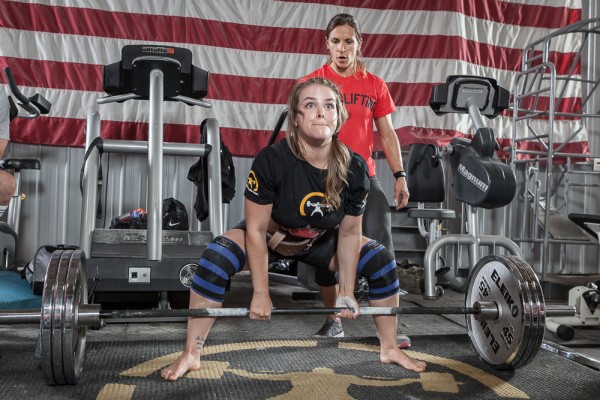
While the bench press may be the most commonly done exercise in gyms across America, the deadlift is regarded as one of pure brute strength. Unfortunately, it’s an exercise that doesn’t get a lot of attention in regards to technique. While everyone is built differently and will have slight changes in technique, there are a few things that are common among any deadlift and should be looked for when building this lift.
Foot placement in relation to the bar
Some people hit certain sticking points and plateaus and can’t figure out where the problem lies. The most common weak spots are right off the floor or right at lockout. While one could assume that it’s a weak muscle group, many times it links back to the start of the lift, and more specifically, the foot placement. Limb length and body structure will play a role, so it’s difficult to say exactly where to place the bar. But if you are having problems off the floor or right at lock out, you might need to adjust your starting position.
This happened just last week. One of my clients had been setting up all the way, shins to the bar for conventional. She moved back just a hair away from the bar and felt so much better!!! Why? When she was up close to the bar, her shoulders were a tad too far in front of the bar. Moving back a hair allowed her shoulders to be in a better position and not end up too far forward.
Deadlifting to improve your deadlift
While doing a lift week after week does improve your technique and improves the efficiency of the central nervous system (CNS) in that lift, you probably don’t need to deadlift every week to see your numbers go up. Deadlift variations and special exercises work well to improve your weaknesses and still allow you to strain through a maximal effort for training the CNS. If you’re trying to improve your sumo deadlift, but are having trouble with the hip mobility and hip strength, more (wrong) sumo pulling isn’t going to help. Lack of hip strength would just cause you to pull with mostly your back anyway, thus never really working the hips. Target your hip mobility and hip strength another way. And don’t forget that if you improve your conventional deadlift, your sumo will also go up.
If you’re trying to improve your conventional deadlift, but can’t see to overcome a crappy lockout, continuing to attempt near max weights isn’t going to improve your deadlift. There are a number of things that could help this like speed off the floor, accommodating resistance (chains or reverse band), and heavy rack pulls. Improve your special exercises and your main deadlift will improve as well.
Pulling your shoulder blades together
Many new lifters try to get into a good “chest up” position at the start of the pull, but they mistakenly retract, or squeeze back, the shoulder blades. This actually makes you have to pull the bar further (because you’ve “shortened” your arms). On top of that, a heavy weight will only pull your shoulders forward back out of that position. The reason we don’t want that is because it often causes the lifter to be pulled out of position with the hips rising first. (As they start to pull, the hips start to move, but the shoulders get pulled forward, simultaneously, and it’s not pretty.)
The lats and shoulders should be locked down, not back.








